European Influenza
The project European Influenza of the artist Daniel Knorr represented Romania at the 51st edition of the Venice Biennale. The Romanian pavilion in the Giardini di Castello was left empty, the grey walls bearing the traces of past interventions - small scratches and inscriptions. The two doors of the pavilion were both left open: the entrance door from the Giardini, and the exit door, towards the park, leading directly to the "real" world, outside the space of the biennale. Also, accompanying the exhibition, there was a reader, which was given free of charge to the visitors and for which the commissioner of the pavilion, the curator and theoretician Marius Babias has gathered a number of texts on the issue of the EU expansion and Eastern-Europe's identity self-(re)definitions.
One of the closest precedents of this work was the project of Santiago Sierra for the Spanish pavilion at the previous edition of the Biennale, in 2003. By blocking the entrance to the pavilion with a cement wall and allowing in, through the back door, only the owners of a Spanish passport, the artist was reflecting on the issues of enforcement of borders - whereas the general political discourse was claiming their fluidization - and of the efforts made by the Western European countries to stop immigration.
While the spectators of Sierra's work were given the possibility to contemplate on their belonging to a particular nation or being outsiders, with the privileges/discomforts that this situation created, in the case of Daniel Knorr's work it was the public themselves who created the situation and who could continue the work. On the one hand, they became aware of their own bodies moving through the space and turning from the art consumers and judgers to the anonymous passers-by. On the other hand, the work's materialization came later, in the people's minds, and "in the process of their interaction with society and media"1 . This is where there lies a fundamental difference between the projects of Sierra and Knorr, a difference which could be formulated in Suzana Milevska's distinction between "art that is about the political and art that enters and functions within the realm of the political"2 .
Santiago Sierra's work, while pointing at the flaws in society, has a contractual relationship with its viewers; they accept to be frustrated in return for their being reminded of the world's injustices and hierarchies. In the words of the curator Rosa Martinez, "the wall polarizes the Biennial spectators on either side of a hypothetical stage and formalizes physical and political tensions"3 . Although critically engaged with the political, the work nevertheless develops on the safe ground of the biennale, it is a staging meant to recreate a situation that the spectators have lived (or not) somewhere else. Hence, it ends up being always "about the political", it keeps its autonomy as a comment upon something.
The work of Daniel Knorr was not perceived immediately as a crude politically loaded work. The feeling it first roused was rather melancholic, a state of waiting, of looking in two opposite directions. The process of the viewers becoming aware of the work's multiple connotations was in fact only starting and not ending with the pavilion. Issues raised by the expansion of the European Union, such as local identity versus import of pre-established values, borders (again) and influences (or flues) in this "transitory space, which is being politically and culturally recast and remapped"4created the conditions of possibility for the work to exist but they also constituted ingredients of the discursive space which the work subsequently became part of.
Since 2001 Daniel Knorr has worked with the concept of the "invisible work", in such projects as "Klaus, Klaus comes by foot" or "Space Co-opted". The "invisible work" is actually the work delegated to the public. Once they become acquainted with it, the work accompanies them and it is only "exposed" when one reads or talks about it. Thus, the "invisible" work is not (only) the "empty" work, which formally strips bare a space/situation in order for a content to become more evident. Nor is it (only) the "void" loaded with potentiality, creating the promise of future meanings. Rather, its "invisible" character allows it, as for the "invisible man", to infiltrate anywhere, and to travel with its public beyond the place and moment when they were its public.
Raluca Voinea
This text was originally written for and published in the Autumn issue of Praesens magazine.
Press release for European 1.Press release for European Influenza, the Romanian Pavilion, Venice Biennial 2005
2.Suzana Milevska: Staged (In)Visibility, paper for the "Strategies of (In)Visibility" conference, Camden Art Center, London, 2005
3.Rosa Martinez : Merchandise and Death, in Santiago Sierra catalogue. Spanish Pavilion, Venice Biennial 2003.
4.Marius Babias: The New Europe: The Culture of Mixing and the Politics of Representation, in the Romanian Pavilion's Reader, 2005
| |
|
||||||||||||||||||||||||
| |
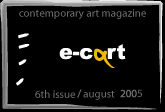 |
 |
|
||||||||||||||||||||||
 |
|
||||||||||||||||||||||||
 |
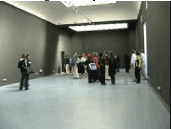 |
|
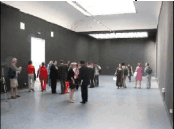 |
|
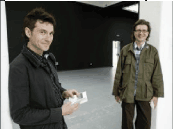 |
|
|
||||||||||||||||||
 |
 |
|
|
||||||||||||||||||||||
| |
|
|
|
||||||||||||||||||||||
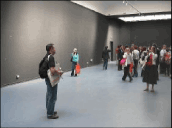 |
|
|
|||||||||||||||||||||||
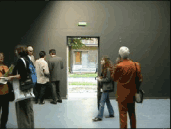 |
|
||||||||||||||||||||||||
| |
 |
|
 |
|
 |
|
|
|
|||||||||||||||||
| |
|
||||||||||||||||||||||||
| |
|
||||||||||||||||||||||||
 |
|
||||||||||||||||||||||||
 |
|
||||||||||||||||||||||||
 |
|
||||||||||||||||||||||||
 |
|
||||||||||||||||||||||||
| |
|
||||||||||||||||||||||||
| |
|
||||||||||||||||||||||||
 |
|
 |
|
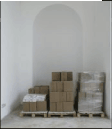 |
|
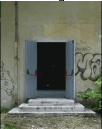 |
|
|
|||||||||||||||||
| |
|
|
|
|
|||||||||||||||||||||
| |
|
|
|
|
|
|
|
|
|
|
|
|
|
|
|
|
|
|
|
|
|
|
|
|
|